Zoleo Satellite Communicator review: cellular service anywhere
How to send emergency alerts and text messages without cell service from remote landscapes anywhere in the world

Zoleo Satellite Communicator is a two-way, global SMS and email device that allows users to send and receive messages from anywhere on the planet. Designed for use in off-grid areas without cell service, Zoleo helps users stay in touch with loved ones back home and make SOS calls in case of emergency.
My landscape photography work has often taken me to remote environments where cell service is non-existent. I enjoy the feeling of being unplugged and focused on my work, but not being out of communication with my family for so long, or the thought of being stranded alone in need of help.
So for a recent trip to Iceland, where I planned to do a fair amount of traveling and shooting off-grid, I brought along a Zoleo Satellite Communicator.
Did the Zoleo work? And after two weeks of use, is it worth buying? Let’s find out.
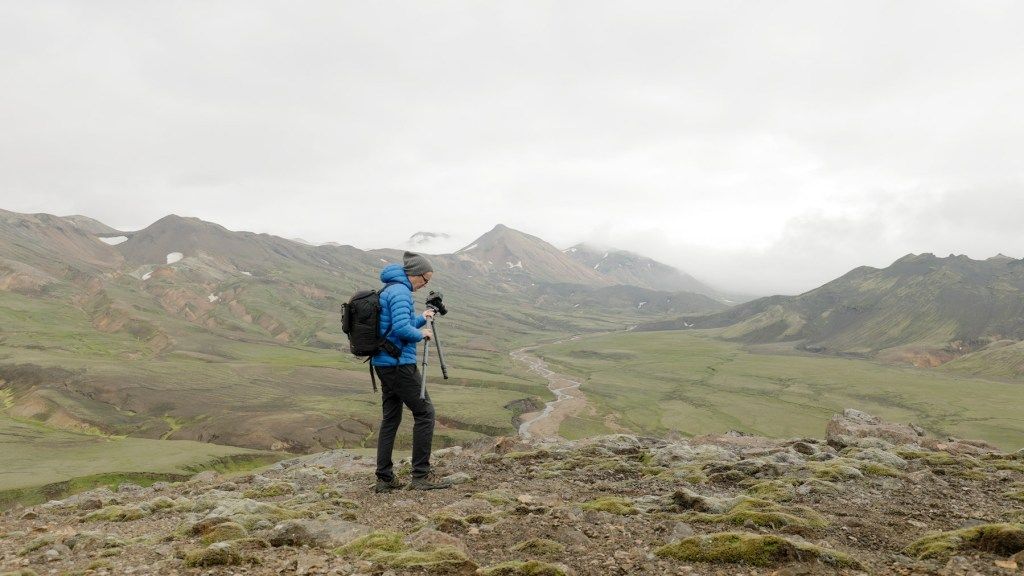
What the Zoleo Is and Is Not
Let’s begin with what the Zoleo is not to avoid confusion before we get ahead of ourselves.
The Zoleo is not a WiFi bridge. It does not allow you to stream Netflix, watch YouTube videos or post images to social media (I mean, that’d be pretty cool, but no). It also cannot make phone calls, or send and receive email and text messages using your current email address and phone number.
What the Zoleo can do is call for emergency help, send automated check-in messages to a special someone, and send and receive email and text messages using a Zoleo provided email address and phone number with the Zoleo app on your phone. All of that is transmitted by the device up and down from anywhere on planet Earth through Iridium satellites passing overhead.
The Device
The Zoleo satellite communicator is small, thick and rugged. It’s an electronic box wrapped in a protective rubber shell that repels dust and moisture.
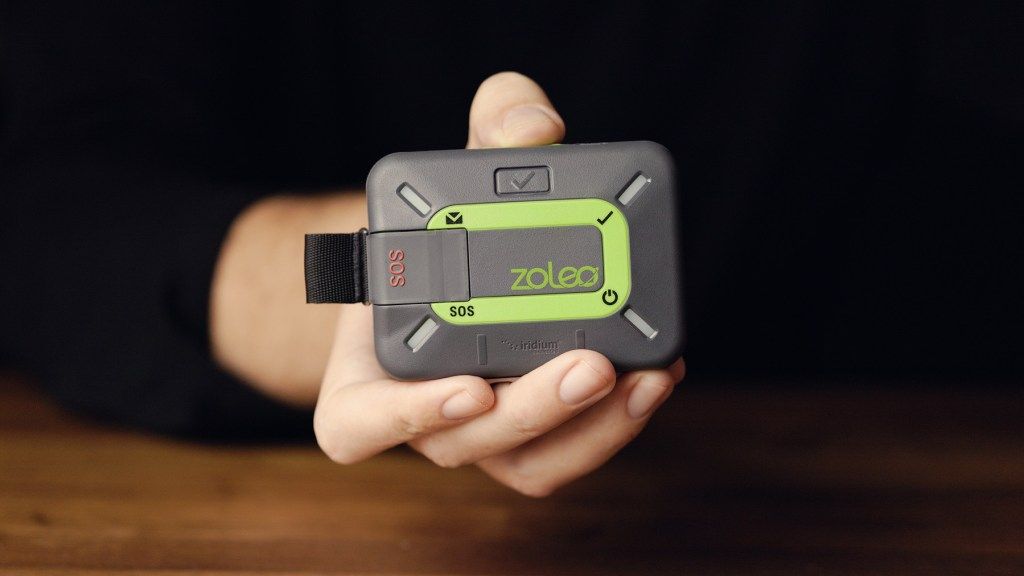
The communicator has a built-in rechargeable battery that can run 24 hours a day for about a week before it needs recharging. Once fully depleted, the battery recharges in a couple of hours through a micro-USB port.
On top of the device are four LED lights. The light with the envelope icon alerts you when an SMS or email message has been received through your Zoleo account. The device also alerts you with an audible sound in case you don’t see the light.
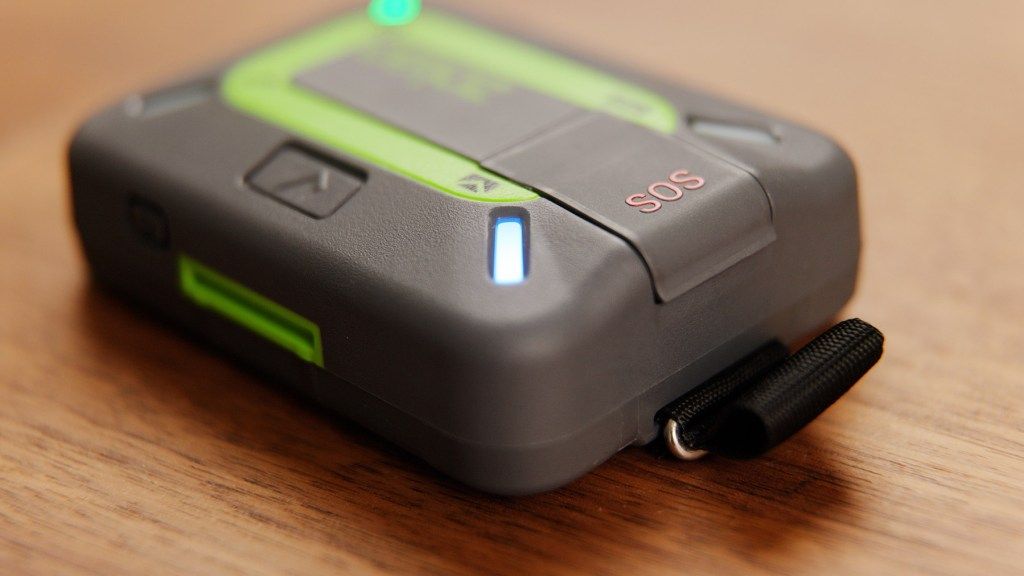
The rectangular button with the check mark is for sending check-in messages. This is such a cool feature, for then you have no excuse for not keeping in touch with a special someone back home. No more “oh I forgot”, or “I was busy”, for you may press the button whenever you want and they know you’re okay and where you are (with GPS coordinates linking to a map).
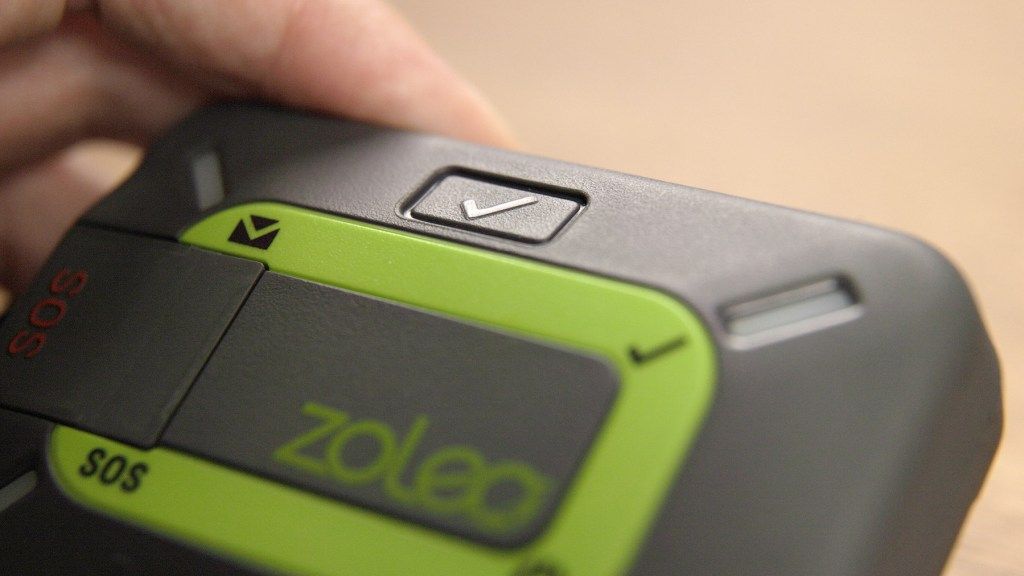
But even if that’s too much work, Zoleo can also automatically send check-ins for you every few minutes, hours or however frequent you want for an additional monthly fee.
And then finally, there’s the SOS button. Thankfully it’s covered with a protective flap to prevent accidental use. When pressed, the Zoleo device contacts the GEOS International Emergency Response Coordination Center (I didn’t know this was even a thing). Your call for help is then forwarded to the appropriate emergency response contact wherever in the world you are, and they will message you through the Zoleo app. If for some reason you don’t respond, or cancel the SOS, local emergency services will be dispatched to your location.
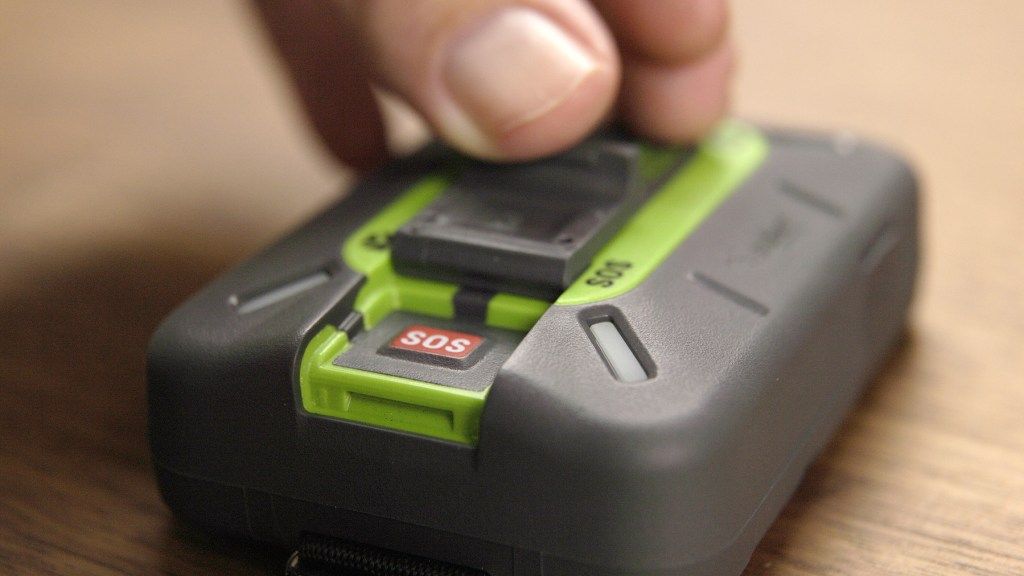
Additionally, your SOS will also be sent to two personal contacts that are assigned when the device is setup.
Using in the field
As mentioned earlier, I used the Zoleo for nearly two weeks during a recent trip to Iceland. I never had to call SOS (thankfully) but I did send emails, text messages, and use the check-in functionality multiple times each day.
Unfortunately, the initial user experience of the product wasn’t great. I told my spouse I’d be sending her check-in messages each day, so every few hours I got in the habit of pressing the check-in button on the device. Check-in messages were rarely sent during the first few days of my trip.
I couldn’t figure out why, and the Zoleo iOS app wasn’t helpful at all. It didn’t explain what the error was. So I checked the documentation, and it was then I learned that – in the version I was using – checks-in could not be sent when my phone had cellular service. Check-ins would only send when my phone had no service.
So when I finally figured that out, I tricked the Zoleo into thinking my phone was offline by enabling Airplane mode. Then check-in messages were sent through the Iridium satellite network no matter where I was at the time.
But even then, I still encountered issues. Sometimes check-ins would send, other times not. And when they did send, sometimes my spouse would receive GPS coordinates, other times she wouldn’t.
I spoke to Zoleo about this, and they said the Zoleo communicator is like a satellite dish. It needs open sky above, and functions best when laying flat. So it may fail if used from inside a car, indoors, underneath trees, etc. Additionally, Iridium satellites pass overhead about every ten minutes, so depending on where a satellite is in orbit, a connection to the network could be shut-down before the device is able to send a message.
None of this was clear when I first activated the device and started using it. It was only after I had problems and contacted Zoleo support that I understood its limitations and was able to work around them.
But what about SOS?
Well, obviously this is an impossible thing to test without actually pressing SOS and waiting to see how long it takes for someone to respond, or even arrive at your location.
But the important thing to know about SOS – and I verified this with Zoleo to make sure – is that SOS uses the same Iridium satellite network as check-ins. Which means SOS may not function if your phone has a cellular connection, or if the Zoleo does not have clear line-of-sight to satellites passing overhead.
I was told the Zoleo would be more aggressive when sending SOS messages compared to check-ins, but that’s hard to verify. I was also informed that the SOS functionality can be tested ahead of time with the emergency response network, to ensure the device is actually working before taking it out into the field.
In my opinion, Zoleo could do a better job in their software of explaining why errors are happening, and what can be done to resolve them. But Zoleo could also make the user experience of check-ins far better and less frustrating by simply allowing check-ins to be sent through cell or WiFi in addition to the satellite network. I find it odd that such a prominent and useful feature that has its own dedicated button on the device functions this way.
Ideally, I could press the check-in button at any time, from anywhere, and my spouse would know I was okay and where I was. Then the product would work out of the box without unnecessary frustration and confusion.
Pricing
With Zoleo there are two separate costs – the cost of the device itself, which at the time of this video is $200 in the United States – and the cost of monthly service for the Zoleo phone number and email.
Zoleo currently offers three monthly plans costing $20, $35 and $50. The main difference being how many messages may be sent through the satellite network.
$20/mo includes 25 satellite messages (with extra charges per message for overage), $35/mo includes 250 satellite messages, and $50/mo includes unlimited satellite messages.
The duration of each plan runs three months, then the service may be temporarily suspended when not in use for $4 a month. This allows you to keep your Zoleo phone number and email address, and quickly re-activate the device when ready to travel again.
I went with the $35/mo plan because 25 messages in the $20 plan seemed rather low, and I didn’t feel the need for unlimited, so $35 seemed about right.
Also, as mentioned earlier, for about $4 extra per month the device can send automated check-ins, if that is of interest.
Final Thoughts
Overall, I felt the Zoleo setup and activation experience was good, although it does take some time to activate and setup your check-in and emergency contacts. Make sure you dedicate some time before traveling to do this and test everything to make sure the device is working properly.
In the field, while in Iceland, I enjoyed the peace of mind knowing my family could contact me at any time, no matter where I was, and I had the ability to call for emergency help if needed.
When check-ins worked, they were fantastic, and my spouse very much appreciated knowing I was okay and where I last was.
I also liked being able to use my phone and its keyboard to send messages as opposed to some weird, cumbersome screen and user interface on the device itself. I think it’s really smart that Zoleo separated the communicator from the interface instead of trying to bake both into one product.
Though my experience was somewhat rocky, I would much rather have the Zoleo than travel to a remote area without it. Just knowing I can send and receive messages from anywhere – even if it might take a few attempts and be a little flaky – is way better than not having anything at all.
For that reason alone, I’d recommend the Zoleo for wherever in the world you may be traveling next.
Purchase the Zoleo Satellite Communicator
Check the current price of the Zoleo Satellite Communicator through the link below.
Video
The video version of this review is embedded below.



